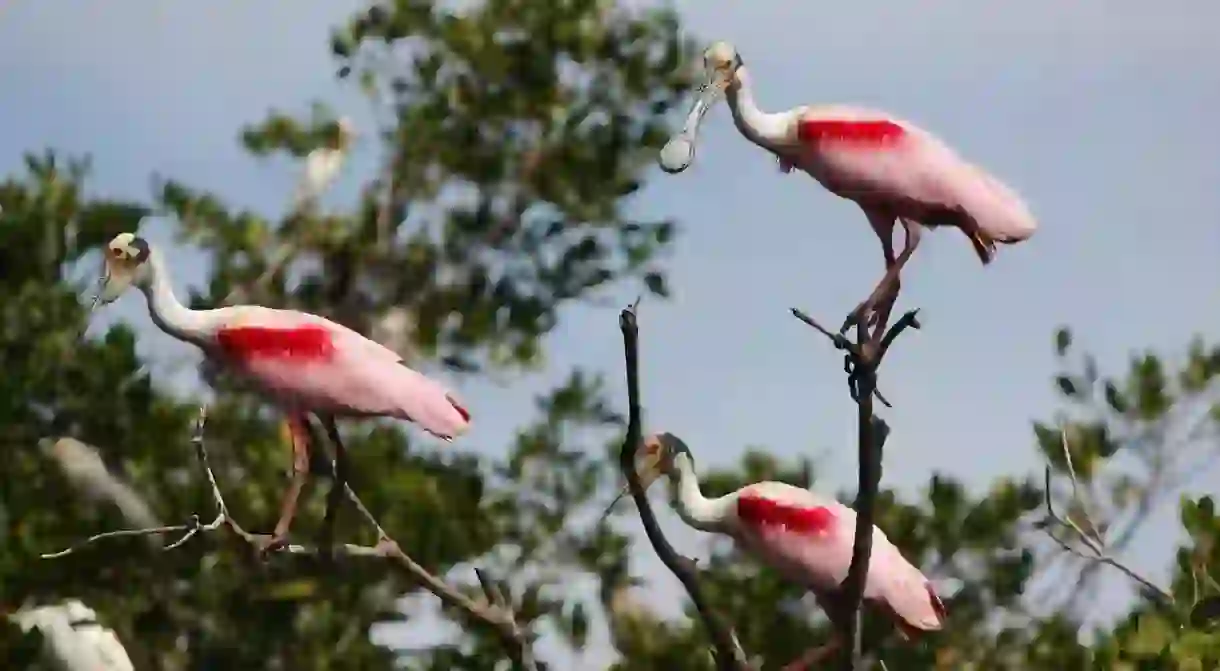Must-See Wildlife While Sailing Around the British Virgin Islands

The British Virgin Islands are firm favourites with sailors for their great beaches, gentle breezes and lively towns and restaurants. But the islands also have diverse and surprising wildlife both above and below the waves. Animals in the Virgin Islands include sharks, colourful fish, iguanas, geckos, sea turtles and even crocodiles many of which can be spotted when sailing around the British Virgin Islands. Take your binoculars and a camera to encounter the islands’ best inhabitants.
Spot exotic wildlife on an eight-day sailing holiday through the British Virgin Islands with Culture Trip – from hawksbill turtles to roseate flamingos.
Marine life in the British Virgin Islands
Clear water and great visibility mean snorkelling in the British Virgin Islands is the best way to meet the local marine life. Hawksbill turtles are among the popular animals to spot in the Virgin Islands, as are bottlenose dolphins. The best time to see them is at sunrise or sunset near Jost Van Dyke, they tend to swim in pods for at least an hour or so.
You might be wondering whether there are sharks in the British Virgin Islands? The answer is yes – hammerhead, tiger, blacktip sharks, leopard sharks and Caribbean reef sharks live within these waters – but they are elusive. Try Monkey Point on Guana Island or the Bight on Norman Island and you might get lucky.

Further out to sea, it is possible to spy humpback whales between December and May, around 12mi (19km) north of Virgin Gorda, as they travel north to colder waters to hunt for krill and plankton.
Even if you don’t manage to spot the larger sea mammals, the waters are teeming with life here – from parrotfish, angelfish and barracuda to spiny lobster, eagle rays and starfish nestled among the sea fans and vibrant coral. Diamond Reef near Scrub Island is popular with divers and snorkelers – look out for a colony of garden eels.
Birds in the British Virgin Islands
Keep your eyes peeled for the pretty bananaquit – the British Virgin Island’s national bird – while sailing through the region. The tiny yellow-breasted creature is sometimes called the sugarbird as it loves to snack on granulated sugar in bird feeders. Look out for the tiny jewel-coloured hummingbird, too – and the imposing scissor-tailed frigate bird. The brown pelican can be seen on most beaches – watch them hit the water with their bills to scoop up fish.

However, the most elegant bird has to be the roseate flamingo, found on Anegada. These pink birds were restored to the island’s salt ponds in 1922 and since then, the population has flourished. Spot them from the observation deck at Flamingo Pond – some reach as high as 5ft (1.5m) tall.
Reptiles and amphibians in the British Virgin Islands
Hiking around the Gorda Peak National Park is a great way to spot native British Virgin Islands animals. It’s rich in biodiversity and boasts excellent views from the summit to North Sound and Anegada. Spot tree frogs, bats, soldier crabs and the world’s smallest lizard, the Virgin Gorda gecko. You may also see a mongoose. Fortunately, snakes are relatively rare in the BVIs, but you will see exotic iguanas and tortoises.

Tips on wildlife spotting responsibly in the British Virgin Islands
Remember, these animals are living in the wild and need to be treated with respect. Never pursue or chase animals that you meet – let them control the encounter. Avoid touching them, even if they get within arm’s reach. It’s also never a good idea to feed wild animals as it makes them overly reliant on human food sources and disrupts their natural hunting instincts. Take all your trash with you and leave no trace when you depart.













